Highland games (Scottish Gaelic: geamannan Gàidhealach) is a competitive strength sport with events held in spring and summer in Scotland and several other countries with a large Scottish diaspora as a way of celebrating Scottish and Celtic culture, especially that of the Scottish Highlands. Certain aspects of the games are so well known as to have become emblematic of Scotland, such as the bagpipes, the kilt, and the heavy events, especially the stone put, Scottish hammer throw, weight throw, weight over bar, caber toss, keg toss and sheaf toss. While centred on competitions in piping and drumming, dancing, and Scottish heavy athletics, the games also include entertainment and exhibits related to other aspects of Scottish and Gaelic cultures.
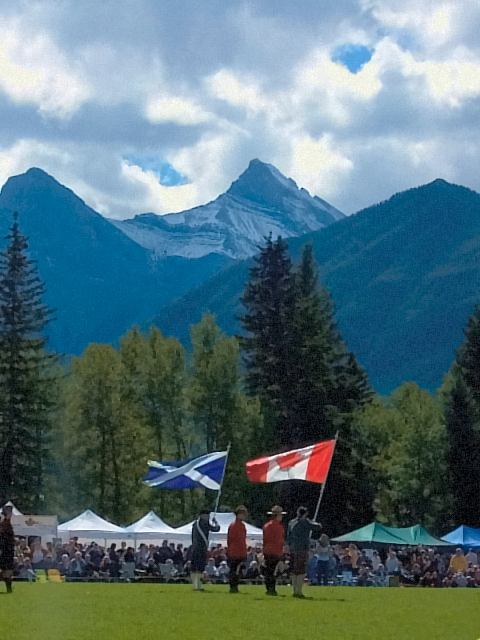
The Cowal Highland Gathering, better known as the Cowal Games, is held in Dunoon, Scotland, every August. It is the largest Highland games in Scotland,[a] attracting around 3,500 competitors and somewhere in the region of 23,000 spectators from around the globe. Worldwide, however, it is exceeded in terms of spectators by three gatherings in the United States: the estimated 30,000 that attend Grandfather Mountain in North Carolina; the New Hampshire Highland Games & Festival, which attracts over 35,000 annually; and the even larger Northern California gathering—the largest in the Northern Hemisphere—that has taken place every year since 1866. This event, the Scottish Highland Gathering and Games, is currently held on Labor Day weekend in Pleasanton, California; and the sesquicentennial event was held on 5–6 September 2015, attracting a record crowd close to 50,000.
Highland games are claimed to have influenced Baron Pierre de Coubertin when he was planning the revival of the Olympic Games. De Coubertin saw a display of Highland games at the Paris Exhibition of 1889.[6][b]
Ancient games
The first historical reference to the type of events held at Highland games in Scotland was made during the time of King Malcolm III (Scottish Gaelic: Máel Coluim, c. 1031 – 13 November 1093) when he summoned men to race up Craig Choinnich overlooking Braemar with the aim of finding the fastest runner in Scotland to be his royal messenger.There is a document from 1703 summoning the clan of the Laird of Grant, Clan Grant. They were to arrive wearing Highland coats and “also with gun, sword, pistol and dirk”.[c] From this letter, it is surmised that the competitions would have included feats of arms. There are also thought to have been events where the strongest and bravest soldiers in Scotland would be tested. Musicians and dancers were encouraged to reveal their skill and talents and so be a great credit to the clan that they represented. Some modern sources suggest more these games would originate from the deer hunts that the inhabitants of the Highlands engaged in.
Attempts have been made to discover earlier traditions of games, although evidence is thin. The primary sources are from the bardic traditions of both contests between clans and of tests to select retainers for clan chiefs. An example of a possible early games venue is at Fetteresso.
Modern games
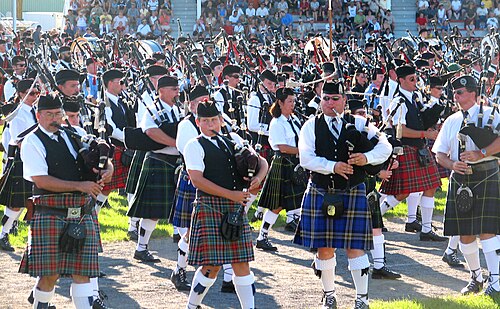
A hundred or more pipers and drummers in an array of kilts at a Scottish games event
Massed bands at the Glengarry Highland Games, Maxville, Ontario, Canada, 2006
Weight over the bar event at the Carmunnock Highland Games, Scotland
Highland Dancing Competition at the Dornoch Highland Gathering, Scotland
The modern Highland games are largely a 19th-century development, from the period following the Jacobite rebellions and subsequent ban on Highland dress.[d]
By the mid-20th century,annual Highland games events, modelled on the traditional events in Scotland along with some elements borrowed from the mòd festivals, had been established not just in Scotland but throughout the United States, Canada, Australia, New Zealand, and South Africa, among other places with a notable Scottish diaspora, which totals about 50 million people worldwide. (The earliest such events in North America go back quite a way, to 1836 in New York and at least 1863 in Nova Scotia.)The modern, rather commercialised gatherings have done much to promote tartan, kilts, and other elements of Highland culture abroad, having up to tens of thousands of attendees, a large proportion of them in Highland dress. The games are the primary source of business for a cottage industry of professional kilt makers outside of Scotland, and are the main recruiting grounds of the numerous clan societies.
While the Scottish Highland Games Association says there are dozens of such events in Scotland, there were at least 260 annual Highland games events worldwide as of 2000, more than 100 of them in the US alone, and dozens more in Canada. They are closely intertwined with bagpipe band competitions (which date to 1781), a lasting source of Highland imagery in their regiment-inspired uniforms; the 2013 World Pipe Band Championships in Glasgow drew over 8,000 pipers and drummers from all over the world.
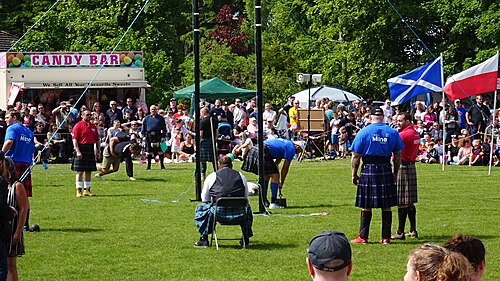
The games’ rather flamboyantly[19] tartaned subculture, a “shortcut to the Highlands”,[20] is sustained outside Scotland primarily by multi-generational Scottish descendants rather than by direct Scottish expatriates. Sir Malcolm MacGregor, chief of Clan Gregor and then convenor of the Standing Council of Scottish Chiefs (well aware of tartan’s connections to tourism and other Scottish economic interests) wrote in 2016 of the games events beyond Scotland that “it is the stuff of kilts and cabers, but it is the Scotland those not living in Scotland want it to be.” Ian Brown (2012) coined the term tartanism (as distinct from tartanry) for this international tokenisation of tartan, kilts, and other symbols of the Highlands as ethnic-identity markers, evolving to some degree independently to suit the cultural needs of the New World Scottish diaspora and unrestrained by the views of the originating Scottish “home” culture. Michael B. Paterson (2001) hypothesises that the fondness for Highland symbols and activities among the diaspora may be due to the European-descended populations in these countries lacking much of a direct experience of culture deeper than a few generations, and being dominated by nuclear family structure; Highland games, clan tartans, Burns suppers, St Andrew’s societies (more than 1,200 of them just in the US), etc. provide a sense of shared roots, heritage, identity, and a broader and more elastic notion of family, as well as fostering Old World, “mother country” connections. Fiona K. Armstrong (2017) writes: “It is a feudal longing in a modern age. It is a yearning for some supposedly comforting and ordered past.” According to Ian Maitland Hume (2001):
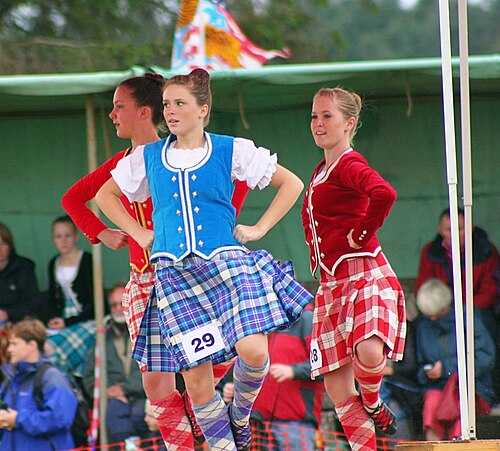
Tartan and the kilt encapsulate many facets of a heritage which people aspire to access; they may also represent a part-mythical family origin for those seeking roots …. The number of Americans who choose to adopt a Scottish element as part of their identity can be attributed in substantial part to the power these symbols possess.
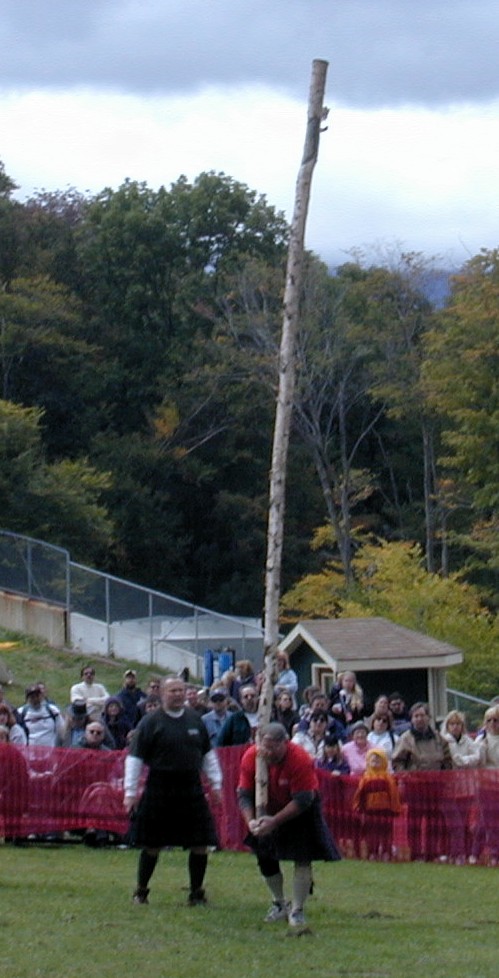
This swell of diasporic tartan enthusiasm seems to have been triggered in the 1950s, the beginning of the age of affordable powered flight, as clan chiefs like Dame Flora MacLeod of Clan MacLeod travelled abroad to promote Scottish tourism and other connections.[9] (At least 1 in 5 Scottish-descended people surveyed in 2017 by VisitScotland, the national tourism board, expressed an interest in travelling to Scotland.) However, in 2009, the US-based Council of Scottish Clans and Associations reported a drop in the number of active clan societies (which peaked at 170, and drive considerable tourism as well as historic-place restoration efforts), with up to a 25% decrease in individual memberships, as well as some of the annual games events coming to an end; “new technology” (i.e. the Internet) seemed to be related.
Discover more from WILLIAMS WRITINGS
Subscribe to get the latest posts sent to your email.


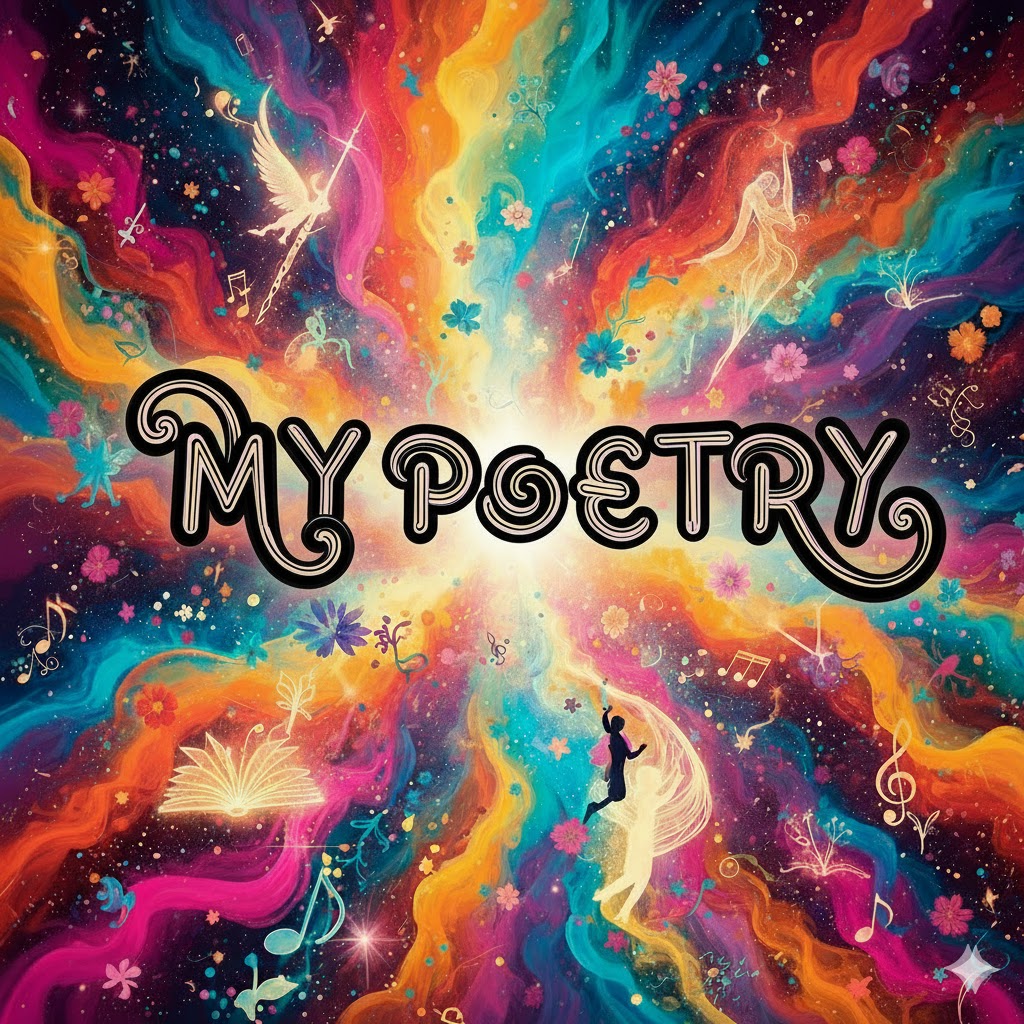
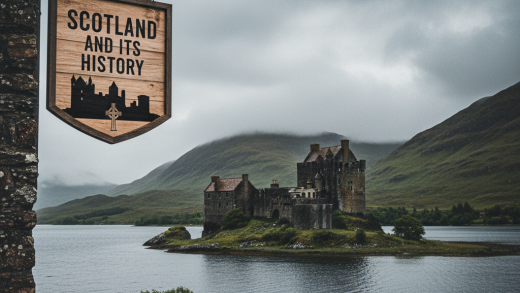

It makes my Scottish heart Sing Billy. We see examples of highland culture here every August at Heritage Days. Scottish dance, hammer throw and Caber toss. I can’t resist the skirl of the pipes. My brother in law has a joke. Q: What is the difference between an onion and the bagpipes? A: Nobody ever cries when you cut up a bagpipe. Cheers Mate. Allan
awe thanks allan sorry to make you homesick pal, bet you miss things like that, but the joke was funny lol, have a nice weekend pal.
A very informative post. Thanks for sharing it with us! 🙂🙏🏻✨
awe thanks friend, and thanks for visiting.
I remember once many years ago we were driving through the Adirondacks and stumbled across a town where they were holding like a local version of this, with the kilts and the bagpipes and the log-rolling and the throwing things that aren’t really meant to be thrown. We stopped and hung out for a while. It was a fun time!
hahahha caber tossing isnt easy imagine lifting a tree and throwing it, beats me how they can do that, glad you had a good time pal, enjoy your weekend.